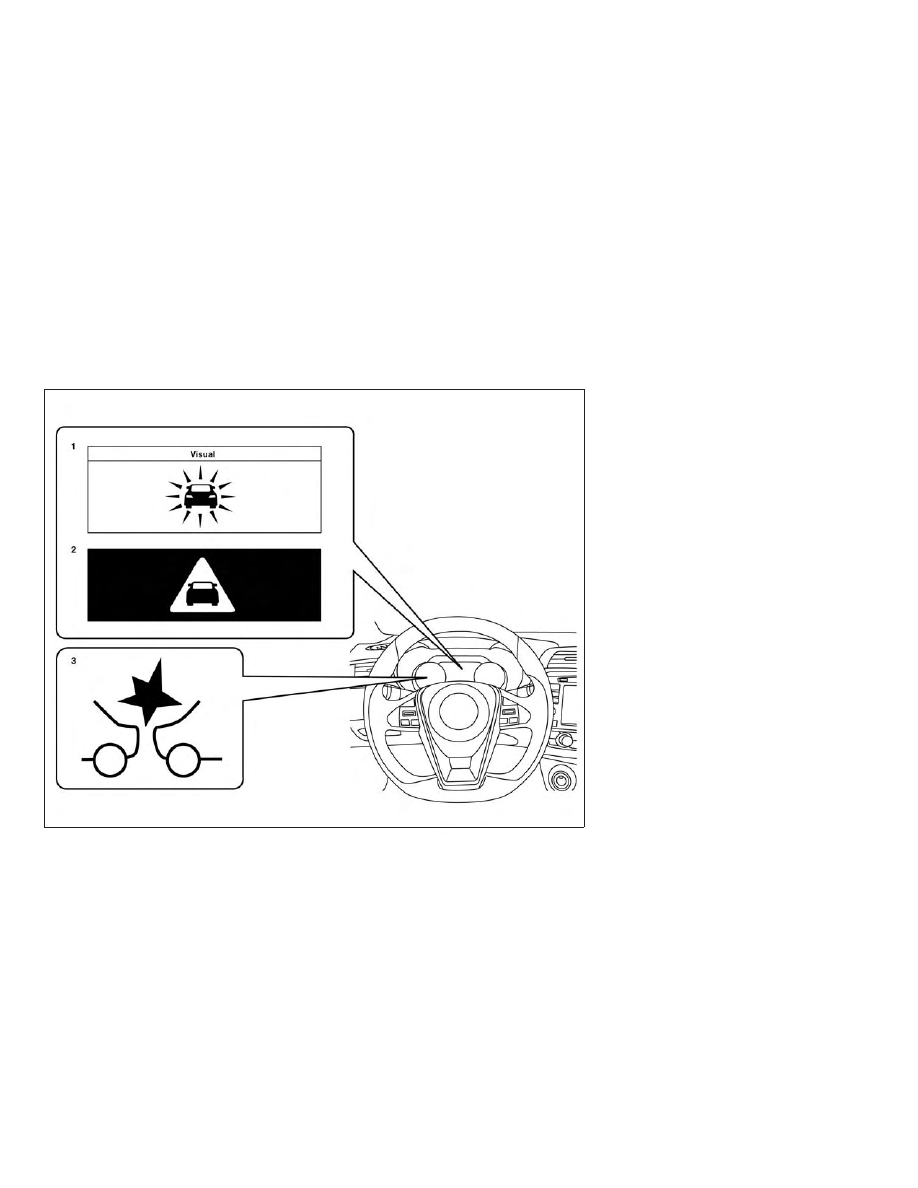Nissan Maxima (2020 year). Manual - part 21

1. Vehicle ahead detection indicator
2. AEB with Pedestrian Detection emer-
gency warning indicator
3. AEB with Pedestrian Detection system
warning light
AEB WITH PEDESTRIAN
DETECTION SYSTEM OPERATION
The AEB system operates at speeds above
approximately 3 mph (5 km/h). For the pe-
destrian detection function, the system
operates at speeds between 6 – 37 mph (10
– 60 km/h).
If a risk of a forward collision is detected,
the AEB with Pedestrian Detection system
will firstly provide the warning to the driver
by flashing the vehicle ahead detection in-
dicator (yellow) in the vehicle information
display and providing an audible alert. If the
driver applies the brakes quickly and force-
fully after the warning, and the AEB with
Pedestrian Detection system detects that
there is still the possibility of a forward col-
lision, the system will automatically in-
crease the braking force.
LSD2773
5-92
Starting and driving